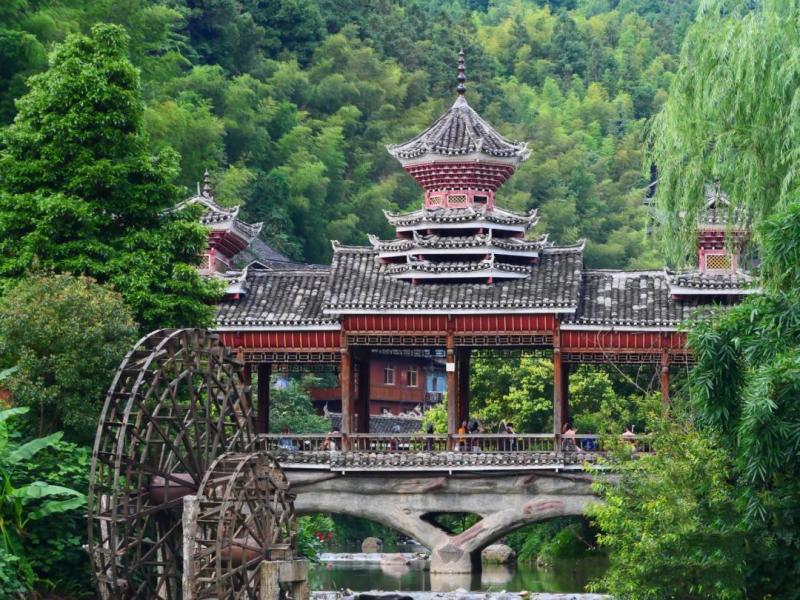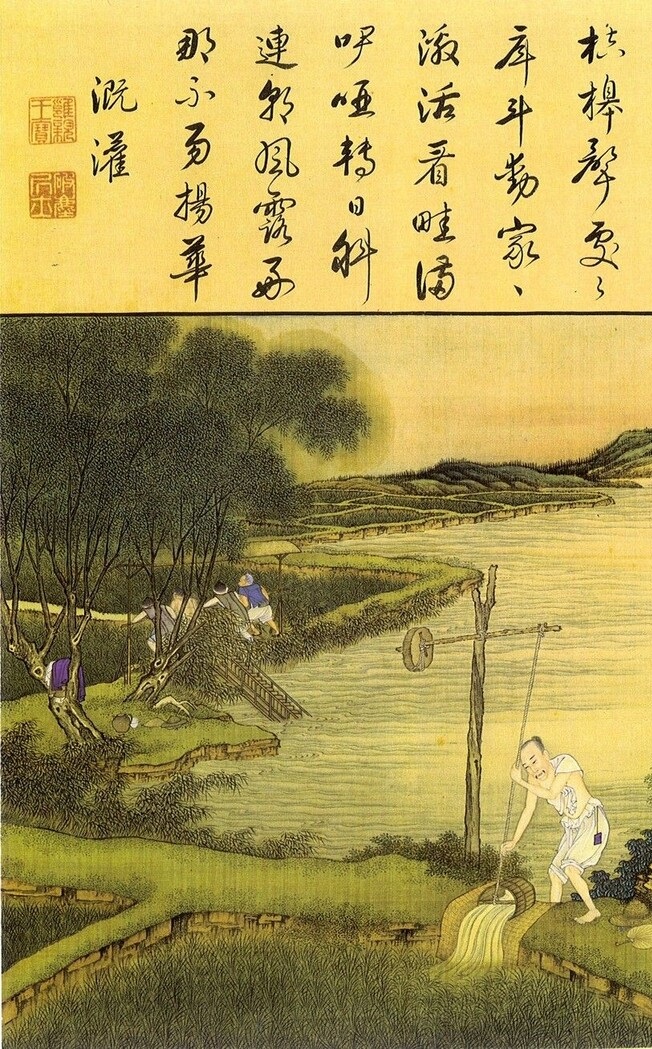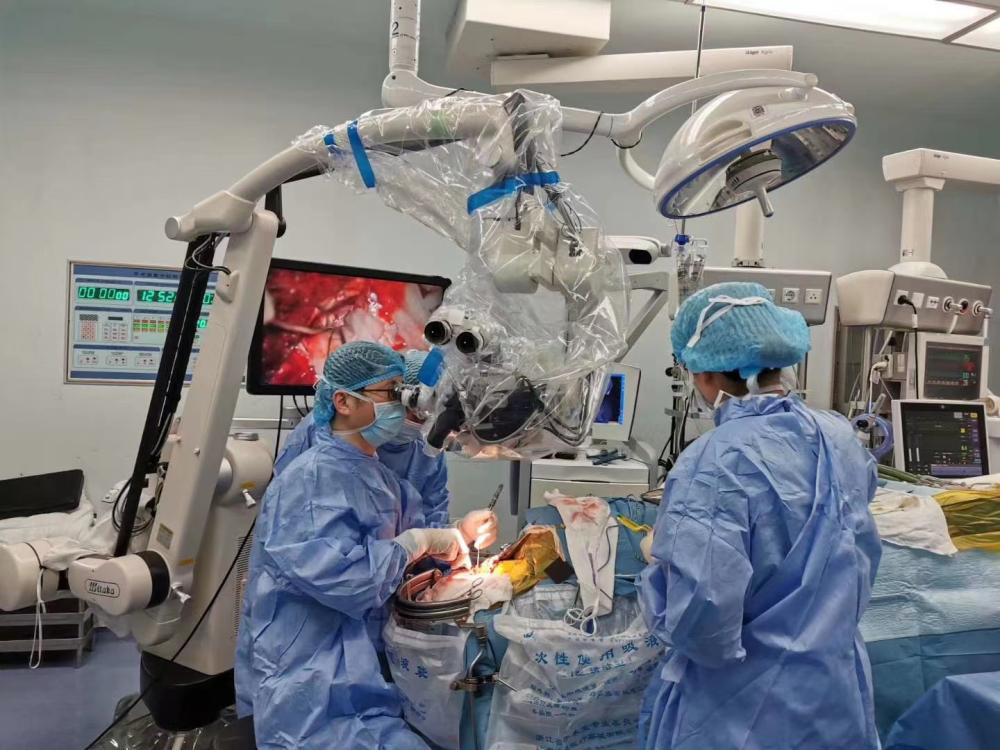The student has been booked by an institution before graduation to study this "unpopular" major
There is a profession called architectural heritage restorer.
The protection and restoration of architectural heritage requires not only designers and architects, but also highly skilled craftsmen who master the special skills of restoring old buildings.
However, at present, most of our old building repair craftsmen are ordinary construction workers who lack systematic knowledge, cultural foundation and artistic modeling ability.
In Zhangyuan, a Shikumen building with red roof and gray walls, Gu Xuefeng and his team worked hard for more than 800 days and nights.
Gu Xuefeng has been engaged in the construction industry for more than 30 years. He has gradually grown from an ordinary on-site construction worker to a technical backbone of the protection, repair and inheritance of Shanghai-style historical buildings. Today, he is a senior engineer and first-class constructor of Shanghai Jing'an Building Decoration Industry Co., Ltd.
How does the restoration of architectural heritage differ from ordinary house construction?
"We need to explore history and understand the historical significance, architectural style and social and cultural background of old buildings. Only after we have figured these out can we repair them," said Gu Xuefeng.
Zhang Garden, founded in 1882, is a witness to the modern society, culture and life of Shanghai. Whether it is the exterior wall, carved wooden windows or pine handrails, every detail has a unique historical imprint.
"Repair the old as it was", what materials to use? Where to find the raw materials? What technology to use? These are the challenges facing Gu Xuefeng's team.
When repairing the exterior wall of Building No. 9 in Zhangyuan, Gu Xuefeng had a question. At that time, Building No. 9 had roughened walls. But other houses with similar structures to Building No. 9 had plain walls. After checking relevant information, he found that the earliest construction form of Building No. 9 was the same as that of Building No. 7 and Building No. 8. Gu Xuefeng restored its original appearance and made Building No. 9 return to plain walls.
In May this year, the "Shanghai Craftsmen Season 9" jointly produced by the Shanghai Federation of Trade Unions, Dragon TV and SMG Documentary Center was broadcast. The documentary focused on the superb skills and ingenuity of 10 Shanghai craftsmen, and Gu Xuefeng was one of them.
In the film, director Jiang Yuanliu and his team demonstrated the traditional technique of "lamp wick sewing" used by Gu Xuefeng's team when renovating Zhang Garden.
The general mortar seam width is 8 mm, while the exquisite lamp wick seam is only 3 mm, reaching the ultimate in texture, aesthetics and craftsmanship.
The finer the gap, the easier it is for the filling material to fall off. To keep the lime from falling off within a 3 mm gap for many years requires not only the exquisite craftsmanship of the master craftsmen, but also the use of a special material that is on the verge of being lost: pounded polished lime.
This is a raw material made of paper fibers and straw fibers. After being ground, it is soaked in water and then sieved and filtered together with lime to form a fine slurry. Cement, yellow sand and pigment are added to make polished lime.
The pounded lime that is screened and washed repeatedly through multiple processes is very fine in texture. Only with such fine material can a 3 mm wick seam be made.
How long does it take to soak the lime in water and what is the mixing ratio all reflect the master chef's unique skill - experience. It is like the temperature of Chinese cooking, which is completely in the hands of the chef and difficult to quantify.
A few years ago, Gu Xuefeng's team encountered the problem of lamp wick sewing when repairing the site of the First National Congress. He consulted many people and finally found a master craftsman who could adjust the raw materials and perform the construction, and solved the problem. This time, the mastered technology was used again when repairing Zhang Garden.
But Jiang Yuanliu regrets that when filming, the first phase of Zhang Garden had already been completed, so the whole process of sewing the lamp wicks could not be recorded, and the construction team did not keep any video. The crew searched for a long time on the Internet, but could not find a detailed video of sewing the lamp wicks. In the end, they only filmed a little bit of raw materials left after use.
"If this technology no longer encounters projects like the First Congress Site and Zhang Garden in the future, it will most likely remain forgotten," said Jiang Yuanliu.
The master who can sew the lamp wick is over 70 years old. Will there be anyone in the future who can achieve the same level of exquisiteness as the master?
Gu Xuefeng, who was born and raised in Shanghai, regards old houses as his homesickness. Touching these bricks and stones, he feels like he is having a conversation with Shanghai's history.
Even though he had ankle repair surgery in 2021, and his colleagues felt sorry for him every time he limped to the construction site, Gu Xuefeng never stopped working.
However, where do so many talents like Gu Xuefeng come from in the field of architectural restoration? How can the traditional skills that have been restored with great difficulty be passed on?
In 2023, with the support of the Municipal Cultural Relics Bureau, Municipal Housing Authority, scientific research institutes, design units, and leading enterprises, and under the guidance of the Changqing Academician of the Chinese Academy of Sciences, Shanghai Institute of Arts and Crafts established the Architectural Heritage Restoration and Inheritance Center, determined to cultivate relevant high-skilled restoration talents.
When the reporter interviewed the center, the center's director Pu Yijun did not get to the point, but instead suggested "taking a walk around first."
He took reporters to visit other professional buildings of the Academy of Arts and Crafts, such as master studios of jade carving, bamboo carving, wood carving, glass, metalwork, lacquerware, cultural relics restoration, and enamel.
Most of them are "intangible cultural heritage" projects. Every seemingly inconspicuous studio gathers the industry's top talents and masters; every small object placed in a seemingly inconspicuous corner is a work of art when it is put on the market.
Are these related to architectural heritage restoration techniques? The answer is "yes".
"Architectural heritage restoration is a very comprehensive profession," Pu Yijun said. In addition to the skills of masons and carpenters, the plaster sculptures on the roofs of old buildings test the shaping ability, the murals test the painting ability, and some old wooden pieces test the painting skills. Including the stone lions at the door of the ancient house, how to restore them is a science.
"Some auspicious carvings on protected buildings have been deformed after restoration and have lost their original momentum. For example, a tiger looks more like a cat after restoration." An industry insider said, "Outsiders watch the excitement, while insiders look at the details. Historical buildings are restored to their original state, but the decorative parts that are the crystallization of the wisdom of ancient craftsmen are more likely to become 'destructive restoration'."
Related companies and industries have always been worried about the lack of talent. Due to the limitations of the times, the old craftsmen on the front line have good skills, but lack aesthetic literacy and cultural education, and their modeling ability is not good enough. Without this training, no matter how good the restoration concept is, it cannot be implemented.
Such highly skilled compound talents need to have both cultural background and practical skills, as well as construction and artistic creation capabilities. Where do talents come from?
In April last year, at a seminar on architectural heritage restoration and inheritance, representatives from relevant universities, enterprises, research institutions, and industry associations in Shanghai gathered together to discuss how to cultivate talents in architectural heritage restoration. Everyone clearly felt that the lack of young and old craftsmen in architectural heritage restoration has restricted the development of the industry.
Shanghai Institute of Art and Design has unique advantages. Here, there is a high concentration of handicraft intangible cultural heritage projects, as well as related art masters and studios. Germany, France and other countries have similar restoration schools, but there is still a lack of vocational education specifically for architectural restoration technology in China.
Under the guidance of Academician Chang Qing of the Chinese Academy of Sciences, the Shanghai Institute of Technology and Fine Arts established the Architectural Heritage Restoration Skills Inheritance Center. An expert committee composed of many well-known experts from universities, industries, and enterprises guides talent training, with the aim of truly putting the theoretical methods of heritage protection into practice.
One is the 3-year junior college program for the restoration of architectural heritage, which pioneered the restoration and protection of cultural relics. Another is the 32-year program, which selects graduates from any major of the school to continue studying architectural heritage protection technology in the central experimental class for 2 years.
The selection process is very interesting. The first round of interviews assesses students' basic knowledge of the major and their enthusiasm for the major.
The second round of practical assessment takes students to the historical building site for surveying and mapping. In the hot summer, surveying and mapping historical buildings is a hard job.
"See if the students can endure the hardship. Some people voluntarily withdraw after two rounds of assessments. The selection is cautious in both directions, with strict entry and exit." Pu Yijun said.
Last year, the center selected 8 students from 25 applicants. They are exempt from tuition and accommodation fees and enjoy certain subsidies during their studies.
We have restorers in the cultural relics industry and craftsmen in the architectural heritage industry, but there are almost no architectural heritage restorers in the modern sense. The Municipal Cultural Relics Bureau, relevant industry associations, and related enterprises are highly supportive of this and are eager to recruit talents. The course design combines industry needs with the characteristics of its own professional group and is independently developed.
How to combine skills, technology and architecture? How to configure more than 20 courses? How to give full play to the strengths of the Academy of Arts and Crafts? How to integrate the courses of foreign restoration schools? There is no mature experience to refer to, so we can only explore while practicing, discuss with university professors and industry leaders in a timely manner, and constantly revise and improve.
For example, in the restoration courses, glass, lacquer art, wood carving, etc. are dispersed in various studios of the Academy of Arts and Crafts, and the skills are passed on in the form of master teaching. For another example, the courses are closely integrated with corporate project practice to improve skills in practice.
Due to the shortage of talent, all eight students currently enrolled have been booked by relevant companies.
Liu Yang, born in the 2000s, was born in the ancient city of Pingyao, Shanxi Province. His grandfather is an old carpenter. He started learning Chinese painting at the age of 8, and later learned clay sculpture. He has loved handicrafts since he was a child. Shanghai, which is "open and inclusive and gathers the best art resources in China", has always been his dream city.
After Liu Yang was admitted to the Shanghai Academy of Fine Arts, he chose the sculpture art major, focusing on wood carving. When he graduated last year, the Architectural Heritage Restoration Skills Inheritance Center had just been established. The teachers knew that Liu Yang had a passion and interest in old buildings since he was a child, and he loved to read Liang Sicheng's books, so they recommended him to take the exam. Sure enough, he was successfully admitted to the experimental class.
Building restoration requires three-dimensional thinking, which is very similar to wood carving. Liu Yang thought that it would not be difficult to get started after supplementing the basic theory. But after learning, he found that it was far from enough to know how to sculpt and shape. How should old buildings be repaired? Why do they repair like this? What are the consequences of repairing them wrongly? There must be a basis behind the skills.
The first year of the experimental class was half class and half practice. While Liu Yang was taking classes, he also participated in the renovation of the cultural heritage building.
"The railing of the building is broken. What kind of wood should be used to repair it? How long should the bottom be cut and how wide should it be retained? All these require looking up information and finding the original image," said Liu Yang.
On the eaves of the protected building, there is a row of tile nails in the shape of civil officials, most of which have been damaged. Based on historical data and relevant shape research, Liu Yang and his classmates, under the guidance of a plaster sculpture master, used local Jiading craftsmanship to restore the original appearance of the row of tile nails.
During the renovation, Liu Yang's basic skills in wood carving and clay sculpture were put to good use, and he also incorporated the knowledge and methods learned in his new major, becoming more and more proficient at the job.
"Our education has long been neglecting practical skills," said Pu Yijun. Some architectural masters in foreign countries were originally carpenters and stonemasons, and they have rich practical experience and their designs are easy to implement. The research and design level of domestic architectural heritage has been in line with international standards, but the restoration practice is still a certain distance away from the international advanced level.
The emergence of the center just makes up for the "shortcomings" of the practical operation industry. Nowadays, some master workshops and training courses offered by the center are not only for students of this major, but also open to the industry.
For example, in May this year, the center jointly organized the country's first historical building stone facade restoration workshop with the Shanghai Cultural Heritage Engineering Industry Association and Tongji University's Historic Building Protection Experimental Center, and invited famous New York restorer Chen Shijia and Tongji University Professor Dai Shibing to co-host the event. The seats were snapped up.
Yuan Yabin, another student in the experimental class, was deeply touched by the relationship between theory and practice.
"Practice makes a big difference." He gave an example, when he was learning wood restoration, he asked a lot of questions based on textbook knowledge. Even if the teacher answered them, he always felt that there were new questions and he didn't understand everything. Until one day when he came to the site and worked with the workers, he immediately "got it" and the original questions were no longer a problem.
What benefited him a lot was that there were many types of workers at the construction site of architectural heritage restoration, including clay sculptors, bricklayers, painters, carpenters, plumbers, and electricians. By communicating and getting along with the workers, he gained some knowledge of other professions and had a more comprehensive understanding of building restoration.
Yuan Yabin has loved watching others build walls since he was a child, and he would watch for most of the day. After being admitted to this major, he felt like a "rat falling into a rice jar". During the study process, he could not only talk with top experts in the field of historical building protection at home and abroad, participate in important academic forums, but also participate in Shanghai's key building renovation projects. These resources and opportunities were unimaginable to him before.
At an academic exchange conference, Yuan Yabin met a senior from Milan. She studied architectural anthropology and sent him several related papers. "It was like a new world opened up for me," Yuan Yabin said.
Yuan Yabin once thought that architectural heritage restoration was just about repairing the house. Now he realizes that architecture is not only a building, but also a home for the human spirit and a reflection of the way of life. Now, when he repairs a building, he thinks about how the space was used in the past, how the ancestors lived here, and its historical accumulation and cultural connotation.
Yuan Yabin has made great progress by looking at historical buildings from a new perspective and then restoring them with care. Not long ago, he participated in a statue restoration and maintenance project undertaken by the Tongji University Historic Building Conservation Laboratory.
After starting to repair and maintain the statue, he nervously asked the expert how the result was. The expert was very satisfied: "Very good, a success in one go!"
Learning from books is always shallow, and one must practice to truly understand. This is especially true for architectural heritage restoration. During the learning process, students will encounter various unexpected problems.
There are two gray-plastic lions at the entrance of a cultural relic building in Jiading. It was originally thought that they were solid, but after the students practiced, they realized that the lions were hollow and needed a wooden frame. How did the ancients build the internal structure? Only practice can bring true knowledge.
During the renovation of the cultural heritage building, it was discovered that there were colored paintings on its beams, but the colors had long since degraded and were mottled. Everyone initially thought that the painting was a dragon, until they returned to the center and restored and studied the pattern, only to find that it was a lion's tail.
This type of murals is relatively rare in old houses in Shanghai, and there is not much historical data and experts who know the subject. The center invited Yang Hong, a mural expert from the Palace Museum. Yang Hong not only appraised and guided the protection of the murals on the building, but also gave a lecture and a wonderful mural restoration practice class.
During the training process, the center cooperates deeply with leading enterprises, and students take relevant courses directly on the construction site, under the guidance of school teachers and taught directly by corporate mentors.
In addition, due to the previous neglect of the inheritance and cultivation of skills, some skills have not been studied in depth as subjects.
For example, the water-brushed stone technique is a common and widely used technique in old buildings in Shanghai. The stone-water ratio, color ratio, and particle size are all very particular. Today, the research and inheritance of Shanghai's characteristic techniques such as Shanghai water-brushed stone has become one of the center's research tasks.
Architectural heritage protection is a comprehensive discipline. From concepts and designs to techniques and implementation, every link is indispensable.
At present, the center is the skill training base of Shanghai Cultural Relics Protection Engineering Industry Association and the skill training base of Shanghai Construction and Decoration Group Architectural Heritage Restoration and Protection R&D Center. It has in-depth cooperation with Shanghai Cultural Relics Protection Engineering Industry Association, Shanghai Construction and Decoration Group, Tongji University and other industries, enterprises and schools, and took the lead in establishing an architectural heritage restoration industry-education integration community, and participated in many architectural heritage restoration projects and topics.
For example, the center has jointly carried out the compilation of technical regulations for thematic plastering projects with Shanghai Construction and Decoration Group, carried out rescue excavation and sorting of the national intangible cultural heritage "Shikumen Lane Building Construction Skills" with Shanghai Meida Construction Engineering Co., Ltd., carried out research on water-brushed stone restoration technology with Shanghai Aiwe Cultural Heritage Protection and Inheritance Workshop, and carried out research and sorting on the inheritance of modern architectural skills in Shanghai with Shanghai Cultural Relics Protection and Research Center. Some of the results have been officially published.
The training of talents in architectural heritage restoration was pioneered in Shanghai. The center hopes that the students trained will become China's first generation of true architectural heritage restorers in the future.





